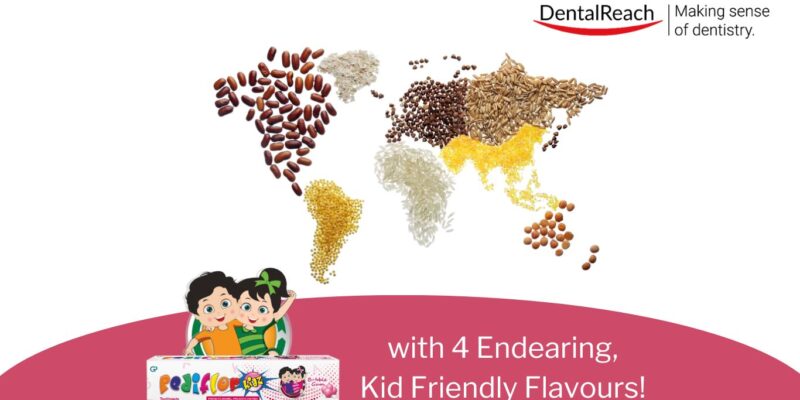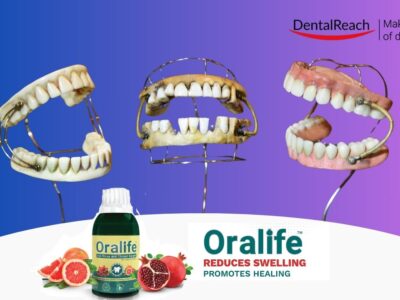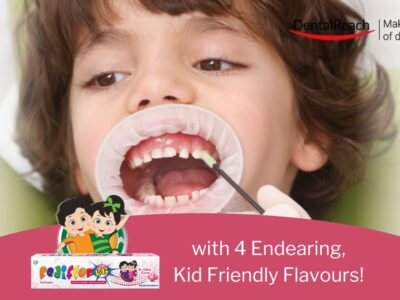Abstract
Menstruation, pregnancy, and menopause cause hormonal fluctuations that can increase the risk of oral, dental, or gum problems in women. Thorough tooth brushing, flossing, and regular dental check-ups support every individual’s oral health and well-being. Proper oral hygiene prevents the onset of oral diseases, especially during challenging phases of women’s lives in terms of their oral health.
When hormone levels change, gum sensitivity may increase. Gum bleeding is common in women, especially during pregnancy, when the body’s immune system is more sensitive. This can lead to gingivitis – and potentially resulting in periodontitis..
Regular and careful tooth brushing and flossing reduce the risk of gum irritation and bleeding, even during pregnancy, by removing accumulated plaque. However, even the best electric toothbrushes available only remove around 60% of harmful bacteria in dental plaque, studies show (2). Hence, professional oral prophylaxis targets remaining hidden plaque, providing additional support for oral health during all stages of a woman’s life. (3).
Stages of a Woman’s Life Associated With Gingivitis
We can break down the main stages into 3 parts:
- Puberty & Menstruation
- Pregnancy
- Menopause
Do Menstrual Cycle Changes Underlie Oral Diseases?
Gingivitis associated with adolescence typically begins around the onset of puberty, between the ages of 8 and 13. Usually, this inflammation is accompanied by bad breath as well as plaque and tartar build-up on teeth.(1,2)
Hormone levels fluctuate throughout the menstrual cycle. Elevated progesterone levels during ovulation and a few days before menstruation can cause gum swelling, redness, and bleeding during tooth brushing. Hormones can also influence how oral tissues heal after dental procedures such as extractions.
Hormonal contraceptive methods also affect the levels of estrogen and progesterone in the body, potentially increasing gum sensitivity and bleeding. (4) Therefore, it’s essential for the dentist to elicit proper history about all medications the patient is taking, including contraceptives. (4)
Pregnancy Requires Special Oral Care
Studies show that around 40% of pregnant women have some degree of periodontitis in their mouth (1). Poor oral hygiene, which leads to plaque accumulation and calculus on the teeth surfaces, is often the cause.
Hormonal changes increase saliva acidity and reduce resistance to plaque buildup. Maintaining diligent oral hygiene is vital during pregnancy, even though brushing teeth may become more challenging. If the patient’s toothpaste’s strong odor or taste triggers morning sickness, advise your patients to consider switching to a different brand.
Morning sickness and nausea during pregnancy can expose tooth enamel to stomach acids, potentially leading to erosion. Heartburn, a common ailment during pregnancy, also affects tooth enamel. To prevent dental erosion caused by vomiting and heartburn, it’s advisable to regularly use xylitol and rinse the mouth with water after instances of vomiting.
Don’t hesitate to gently ask married patients if they are thinking of family planning. If they are, you may recommend more frequent dental hygienist visits before pregnancy to reduce the risk oral health problems following fluctuating hormone levels during pregnancy. Diligent oral hygiene can prevent hormonal-related gum problems and even tooth loss. (5, 6)
It is also important to remember that careful oral hygiene during pregnancy is crucial not only for the expectant mother, but for the well-being of the developing child as well. Periodontitis has been associated with preterm birth and low birth weight, among other complications, in studies. (7)
How Does Menopause Affect Women’s Oral Health?
Many women experience pain or a burning sensation in their mouths during menopause (pre- and post-menopause stages). The mouth may be sore, and mucous membranes sensitive and ulcerated. Taste sensations may also change as estrogen production in the body decreases significantly during menopause. This also affects oral health as saliva secretion decreases leading to dry mouth (called xerostomia). (8)
Dry mouth during menopause is caused by a decrease in salivary estradiol, which is associated with the decline in estrogen levels. Reduced saliva production is harmful to women’s oral health. Without enough saliva in the mouth, teeth become more prone to cavities and fungal infections. With gum defences also weakening due to hormonal changes, even a small amount of bacterial plaque can cause gum inflammation in the mouth.
Dry mouth is more prevalent in women than in men, primarily due to hormonal factors, according to research. Additionally, several diseases such as Sjögren’s syndrome, diabetes, and Alzheimer’s disease, as well as medications commonly prescribed to menopausal women, can exacerbate symptoms of dry mouth.
When salivary secretion in the mouth is reduced, even the best available mechanical oral hygiene methods may not be enough to prevent oral diseases effectively. Antibacterial photodynamic therapy (aPDT) administered regularly at home improves oral hygiene results, reducing the risk of developing oral diseases. Mouthwashes increasing salivary flow can also be advised.
Postmenopausal low estrogen levels increase the risk of osteoporosis in women. When bone density is low due to osteoporosis, gum diseases may occur more quickly. Low bone mineral density can also lead to tooth loss unless regular oral hygiene habits have been established.
Aging also increases the likelihood of needing implant treatments. Establishing daily oral hygiene habits is crucial for successful implant treatment. After implant treatment, the risk of gum disease does not disappear. Peri-implantitis occurs when bacteria accumulate and affect the gum tissue and bone around the dental implant. Without proper treatment, the tissue around the implant can develop peri-implantitis.
Bonus – FAQs
How common are oral health complications during hormone replacement therapy to manage menopausal symptoms?
Oral health complications during hormone replacement therapy to manage menopausal symptoms can occur. These complications may include gum inflammation, irritation of the mucous membranes, dry mouth, and tooth decay. It is essential to elicit history of this therapy in menopausal women and guide them about about possible risks and treatment options during hormone replacement therapy.
How do nutrition and diet affect women’s oral health at different life stages?
Nutrition and diet significantly impact women’s oral health at different life stages. Proper nutrition supports dental and gum health, strengthens bones, and helps prevent oral diseases. A healthy diet is key to good oral health, particularly during pregnancy and after menopause.
What are the best practices for maintaining oral health in women with specific health problems, such as diabetes or cardiovascular diseases?
Adhering to regular oral hygiene practices, such as daily tooth brushing with fluoride toothpaste and flossing or interdental brushing, is important for maintaining oral health in women with specific health problems such as diabetes or cardiovascular diseases. In addition, tongue cleaning to prevent deposits on the tongue is a mandatory add on in such patients. Needless to say, a healthy diet, regular dental check-ups and frequent oral prophylaxis is essential. Following the doctor’s treatment recommendations and properly managing underlying conditions is necessary.
How do psychological factors, such as stress or anxiety, affect women’s oral health at different life stages?
Psychological factors, such as stress and anxiety, can affect women’s oral health at different life stages by increasing the risk of bite disorders, making it difficult to maintain regular oral hygiene, and exposing them to oral health problems such as gum disease and tooth decay. Stress and anxiety can also affect diet and nutrition, further impairing oral health.
Studies have shown that managing stress and anxiety can help reduce the occurrence of bite disorders and maintain better oral health. (10)
Sources
1 Terzic M, Aimagambetova G, Terzic S, Radunovic M, Bapayeva G, Laganà AS. Periodontal Pathogens and Preterm Birth: Current Knowledge and Further Interventions. Pathogens. 2021 Jun 9;10(6):730. doi: 10.3390/pathogens10060730. PMID: 34207831; PMCID: PMC8227634.
2 Aggarwal N, Gupta S, Grover R, Sadana G, Bansal K. Plaque removal efficacy of different toothbrushes: a comparative study. Int J Clin Pediatr Dent. 2019;12(5):385-390. doi:10.5005/jp-journals-10005-1669
3 Pakarinen S, Saarela RKT, Välimaa H, et al. Home-applied dual-light photodynamic therapy in the treatment of stable chronic periodontitis (HOPE-CP)—three-month interim results. Dent J (Basel). 2022;10(11):206. doi:10.3390/dj10110206
4 Jafri Z, Bhardwaj A, Sawai M, Sultan N. Influence of female sex hormones on periodontium: A case series. J Nat Sci Biol Med. 2015 Aug;6(Suppl 1):S146-9. doi: 10.4103/0976-9668.166124. PMID: 26604605; PMCID: PMC4630749.
5 Wu M, Chen SW, Jiang SY. Relationship between gingival inflammation and pregnancy. Mediators Inflamm. 2015;2015:623427. doi: 10.1155/2015/623427. Epub 2015 Mar 22. PMID: 25873767; PMCID: PMC4385665.
6 Yenen Z, Ataçağ T. Oral care in pregnancy. J Turk Ger Gynecol Assoc. 2019 Nov 28;20(4):264-268. doi: 10.4274/jtgga.galenos.2018.2018.0139. Epub 2018 Dec 17. PMID: 30556662; PMCID: PMC6883753.
7 Srinivas SK, Parry S. Periodontal disease and pregnancy outcomes: time to move on? J Womens Health (Larchmt). 2012 Feb;21(2):121-5. doi: 10.1089/jwh.2011.3023. Epub 2011 Oct 12. PMID: 21992584; PMCID: PMC3270055.
8 Suri V, Suri V. Menopause and oral health. J Midlife Health. 2014 Jul;5(3):115-20. doi: 10.4103/0976-7800.141187. PMID: 25316996; PMCID: PMC4195183.
9 Dutt P, Chaudhary S, Kumar P. Oral health and menopause: a comprehensive review on current knowledge and associated dental management. Ann Med Health Sci Res. 2013 Jul;3(3):320-3. doi: 10.4103/2141-9248.117926. PMID: 24116306; PMCID: PMC3793432.
10 Tiwari T, Kelly A, Randall CL, Tranby E, Franstve-Hawley J. Association Between Mental Health and Oral Health Status and Care Utilization. Front Oral Health. 2022 Feb 7;2:732882. doi: 10.3389/froh.2021.732882. PMID: 35199101; PMCID: PMC8859414.





















Comments